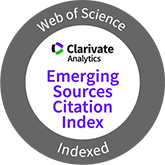Dalla stratigrafia all’archeologia dell’architettura. Alcune recenti esperienze del laboratorio senese
DOI:
https://doi.org/10.3989/arq.arqt.2002.7Keywords:
Stratigraphy, Lime mortars, Rectified photographyAbstract
The author presents three lines of investigation, developed in the University of Siena by the study of some hundreds of historical buildings. The study of depositional processes and products allows us to interpret the dynamics of depositional environments and to establish a chronological framework.This time framework is provided by different aspects of stratigraphy and allows us to interpret building activities in terms of dynamic evolving environments. The record of buildings activities and climatic-pollution processes through historical time is held in these walls along with evidence of the different lime mortars. Our aim is to calibrate the “tools” that could be used to connect the analysis of lime mortar to building activities. Lime mortars could be considered as a perfect dating material for the historical building activities, because it must be freshly prepared every time you need it (it couldn’t be reused), even for the smallest intervention. With the help of a computer we will obtain a rectified photography as simulation where a virtual model works as a mathematics formula. So that we would say that, with the virtual reality,we can either “rebuild” an outline of a building in a precise moment of its history, or we can examine and study all the theories related with the analysis of the material structure, and, eventually,we might understand either the theories will be right or not.
Downloads
Downloads
Published
How to Cite
Issue
Section
License
Copyright (c) 2002 Consejo Superior de Investigaciones Científicas (CSIC) - Universidad del País Vasco/Euskal Herriko Unibertsitatea (UPV/EHU)

This work is licensed under a Creative Commons Attribution 4.0 International License.
© CSIC. © UPV/EHU. Manuscripts published in both the print and online versions of this journal are the property of Consejo Superior de Investigaciones Científicas and Universidad del País Vasco/Euskal Herriko Unibertsitatea, and quoting this source is a requirement for any partial or full reproduction.
All contents of this electronic edition, except where otherwise noted, are distributed under a Creative Commons Attribution 4.0 International (CC BY 4.0) licence. You may read the basic information and the legal text of the licence. The indication of the CC BY 4.0 licence must be expressly stated in this way when necessary.
Self-archiving in repositories, personal webpages or similar, of any version other than the final version of the work produced by the publisher, is not allowed.














